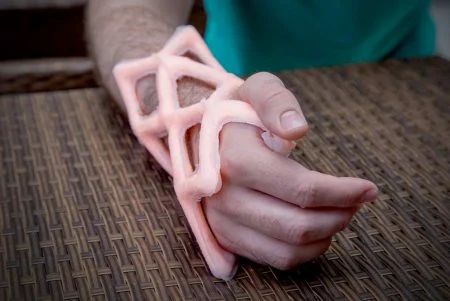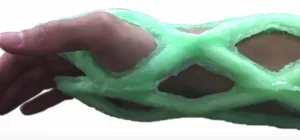People have always been breaking bones, and even our ancestors knew that the only thing you could do, was keep it still till it healed. In the old days a broken bone meant tying two, relatively, straight pieces of wood around the limb and waiting for nature to do its part. After doctors experimented with all kinds of materials for casting limbs , around 1890, a few field doctors found out that gypsum plaster was the best choice, and the plaster cast as we know it today was born. Except for a few tweaks in the material, doctors have been using the same concept to treat broken bones ever since.
We can thank a few ambitious students and their university project for Cast21 (21st century cast). Their aim was to solve the main problem that plaster casts have, namely because they cover the skin, they make it dry, itchy and sore. And not being waterproof makes going about normal life more difficult for patients.
With years of experience in carrying casts themselves, the group set out to find a practical and sustainable solution.

The solution is a soft, braided silicone sleeve, inspired from a Chinese finger trap. After fitting it around the limb and positioning it, a solution is injected into the sleeve which hardens it. After some 20 minutes keeping everything in place, the patient can return to their normal life, take showers and even workout, if the doctor allows. A modern solution for a very old problem.
The Cast21 is a great idea and will definitely make life much easier for a lot of patients, but the students have to fix the funding, licences and all the business stuff before the product hits the market. The only downside is, your friends can’t draw doodles on your cast anymore, maybe they will provide an app for that.








